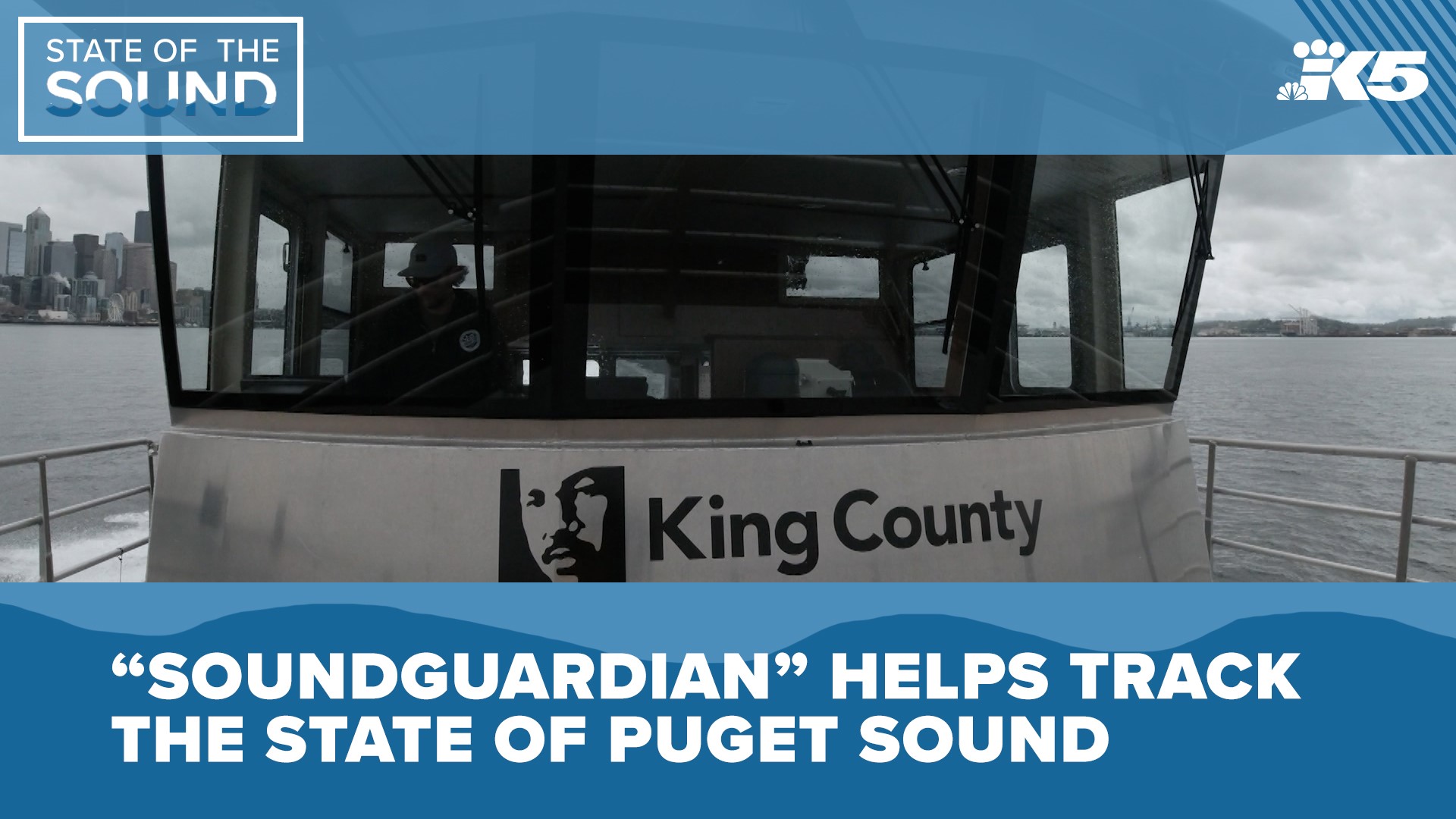SEATTLE — On board the King County research vessel known as "SoundGuardian," oceanographers work to get a deep understanding of Puget Sound that’s not possible to get onshore.
“Puget Sound is a really dynamic place, and there are a lot of things happening all at once,” said Water Quality Planner/Project Manager Taylor Martin. “We can only know so much just by looking at the water. We have to actually go out on the water and collect samples to really get a handle on what is happening under the surface.”
For decades, King County has collected data about the health of Puget Sound’s Central Basin to get a baseline of metrics such as pH (ocean acidification), temperature, salinity, dissolved oxygen, algal blooms and nutrients such as phosphorus and nitrogen. Having a baseline will help researchers identify and track changes as the population grows and the climate changes. SoundGuardian is their current research vessel, equipped with tools that allow them to do some on-board monitoring - though most analysis is done in laboratories.
Scientists participate in sample collection trips every two weeks, stopping at stations that include locations near wastewater treatment plant outfalls, Elliott Bay and the Central Basin. Other stations include checkups on real-time continuous water quality monitors at the Seattle Aquarium and other buoys throughout King County’s marine environment.
Researchers collect phytoplankton and conduct zooplankton tows, in addition to taking water samples and conducting on-site analyses for chemical parameters.
“There are a couple of things we're really trying to understand with a program like this,” Martin explained. “We're collecting data for a long time. This is a long-term data set, and that helps us with a couple of things. One is baseline conditions. What does the Puget Sound look like in an average May, an average July, all the way through the water column? What does it look like? What is there? Because if something changes, we can see a change from that baseline.”
Crunching data is complex, and it can be hard to pinpoint one factor most responsible for changes, which can be cyclical. But data has shown some trends, including a slight upward trend in temperature.
“Acidity and temperature are things that we really want to be monitoring because those are the things we anticipate being impacted by climate," said King County Department of Natural Resources and Parks Director Christie True. "Sometimes those changes can be really small, but they can be impactful. Maybe over time, it looks like it's very small. But in some places, the difference could be quite large. Certain parts of Puget Sound, certain parts of our streams or rivers, could see vast fluctuations in the amount of temperature, and that's bad for salmon and many other things there.”
True said data can be analyzed to determine if changes are based on climate, season, or other factors such as the loss of trees in urban areas – or a combination of all these factors.
“Water quality is essential to the quality of life in this region. It always has been. We have the beautiful mountains, and the lakes and rivers and then we have Puget Sound. And it's really part of our essence, and we have to make sure that we protect it,” True said. “As our population grows, we need to be sure we put in the infrastructure to protect public health and the environment. So, that's why we have to make sure we have wastewater treatment and good garbage collection. We want to make sure our stormwater also is safe. All that infrastructure is important to be matched up with the population growth that we have so we can maintain the environment and also protect people's health.”
A large part of the monitoring work is also to assess how wastewater is impacting the Sound, if at all. In the mid-1950s, there was little wastewater treatment for the quickly-growing region. True said many lakes and rivers were polluted, and beaches had to be closed. That prompted the creation of a treatment system to capture wastewater and plan for the growth of the region.
“It worked marvelously,” True said. “The lakes got much clearer, you could go swimming, so that really started the extent of the monitoring we do right now because we wanted to maintain that.”
As scientists continue to monitor Puget Sound, True said there are some things everyday people can do to contribute to its health. That includes picking up animal waste, reducing chemicals used in gardens and yards, and disposing of excess medication properly.
“A lot of the times when you look at Puget Sound, it looks good. It's very pretty,” True said. “But what is happening underneath the surface is really important, and there are a lot of things that live in Puget Sound. We certainly know about salmon and orca, but there are other fishes and critters that rely on the food chain. So, it's important that the whole system is healthy and that we're prepared for changes as climate develops and can change the quality of Puget Sound. We want to make sure our shoreline has plenty of habitats for these things to live."

